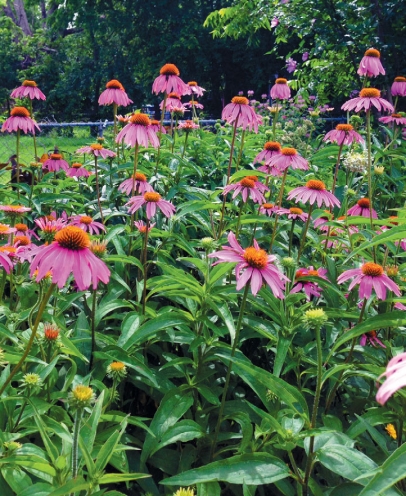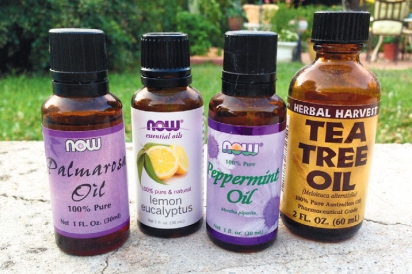Summer Spotlight: Natural Remedies & Preservation
This summer is certainly going to be recognized for the effects of the record-breaking rainfall totals we had this spring. In May alone, we collected over 20 inches. It could possibly be the wettest May for Oklahoma since 1921, climatologists say. Typically, we would always welcome abundant spring showers but this kind of excess can have its downside in the garden. It can cause new seedlings to rot where the stem meets the soil. It can create washout of new seeds that have not yet germinated. It can increase the potential for fungus and certain bacteria to set up shop in undesirable places. Perhaps the most problematic side effect is the explosion of pests that is sure to occur, especially mosquitoes.
GROUND CONTROL
Natural remedies are just as important in the garden as they are in the kitchen. They keep the integrity of your garden humane and chemical-free. They preserve beneficial insects that eat harmful ones, prevent soil and compost contamination, and provide a non-toxic environment for living things.
Neem concentrate is an oil-based extract from the South Indian shrub, Azadirachta indica. The highest levels of the compound come from the seeds. It is an excellent, anti-fungal foliar spray for treating fungus and preventing powdery mildew. It also repels most pests. Safe for vegetables and herbs, it leaves no toxic residue in the soil.
Essential oils are also very effective in the management of pests and diseases. Oils such as peppermint, cedar and cinnamon are great for warding off attacks, while tea tree, lemon and eucalyptus are good for disease. Mix 10 drops into a spray bottle and treat plants twice a day for two weeks to ensure good results.
Another household remedy is dish or castile soap. Dilute 2 tablespoons of natural, non-toxic liquid soap, such as Seventh Generation, into a garden sprayer as a repellent for most insects.
PRESERVATION SOCIETY
So, what’s coming out of the garden in July and August? Seasonal herbs include basil, parsley, thyme, oregano, rosemary and sage. Try preserving them for long-term use by filling ice cube trays three-quarter full. Top each compartment with olive oil and cover with two layers of plastic wrap to freeze. These little portions will keep for about 3 months. They can be quickly thawed to use in sauces, dressings, marinades and soups! Another variation is preserving pesto the same way. Add spinach, kale or arugula for added nutrition and flavor.
Mid-summer vegetables include yellow and butternut squash, zucchini, cucumber, beans, beets, peppers and tomatoes. Most of us already have our favorite recipes using these common veggies but there are a number of methods for preserving your abundant harvests. Try roasting the peeled, cubed butternut squash until tender and making a puree to use as a soup base, or as an addition to a creamy sauce. It’s slightly sweet and very versatile!
Give zoodles a try! This is essentially zucchini cut into noodles with either a spiralizer or a mandolin. You can also use a sharp knife to handcut into a broad noodle shape, like linguini or lasagna. This is a lowcarb, gluten-free alternative to conventional pasta and very delicious! Simply toss them with your favorite ingredients or blanche and toss with tomatoes, basil, garlic and olive oil for a perfect summer dish!
Make cucumber water. Cut thick slices and let them sit in a jar of filtered water for a few hours. This can be a refreshing drink paired with lemon or as a facial mist for inflammation or sunburn. Pickles are also an easy way to preserve your cucumbers.
All of these practices can extend the life of your crops as you preserve the abundance of your harvests - a core principal to effective, urban homesteading.






